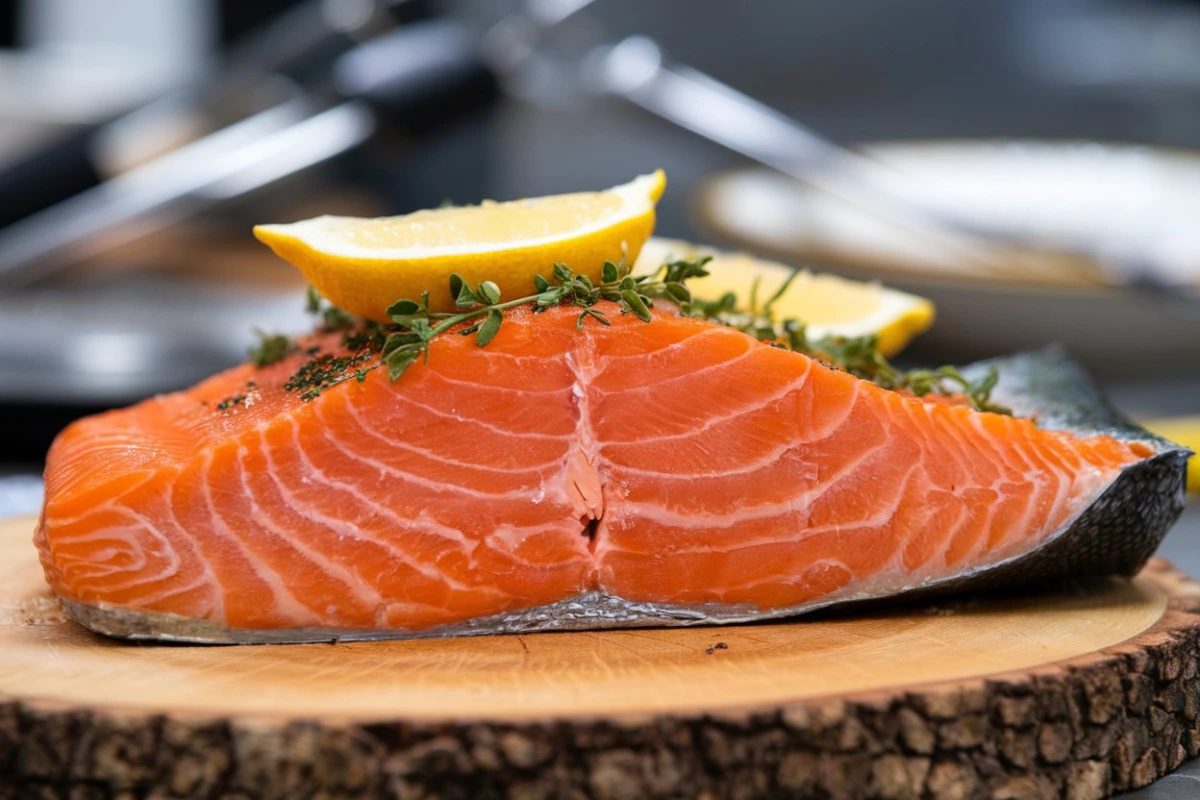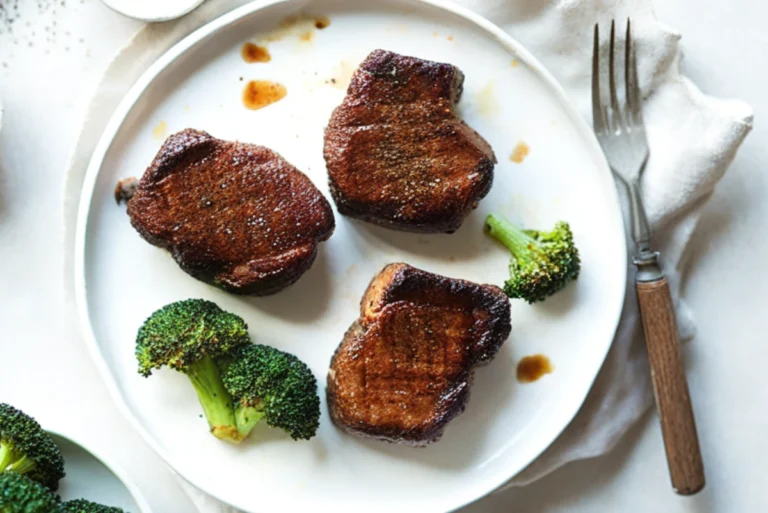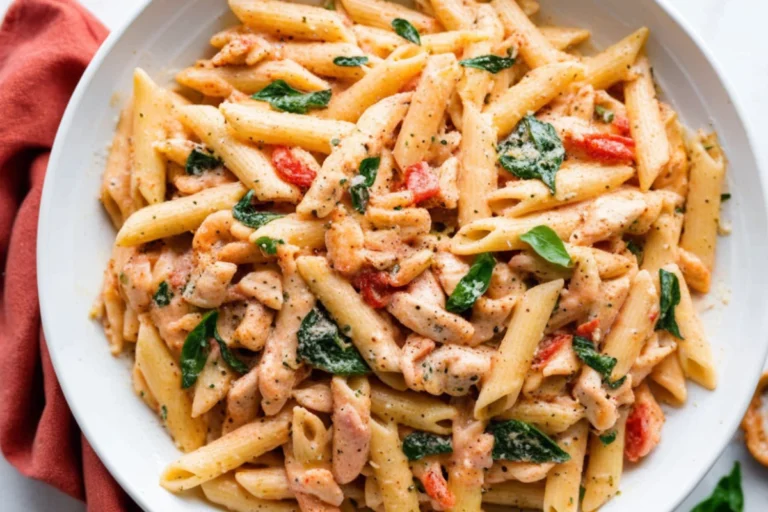Internal Temperature of Salmon: A Guide to Perfectly Cooked Fish
Introduction
Cooking salmon to the perfect internal temperature is key to achieving a delicious, moist, and flaky dish. Salmon is a versatile fish that can be prepared in various ways, from grilling and baking to pan-searing and poaching. However, getting the internal temperature right is crucial for both food safety and the best possible taste and texture. Undercooked salmon can be unsafe to eat, while overcooked salmon can become dry and unappetizing. This guide will explain the ideal internal temperature for salmon, how to measure it accurately, and tips for cooking salmon to perfection every time.
Table of Contents
Ideal Internal Temperature for Salmon
The ideal internal temperature for salmon is generally considered to be between 120°F (49°C) and 145°F (63°C). The exact temperature can vary depending on personal preference and the cooking method used.
- Medium-Rare: 120°F to 125°F (49°C to 52°C) – At this temperature, the salmon is slightly opaque in the center and very moist, with a soft, buttery texture. This is ideal for those who prefer a less cooked, more tender piece of fish.
- Medium: 125°F to 130°F (52°C to 54°C) – The salmon is more opaque and firmer while still being moist and flavorful. This is a common choice for those who like a balance between tenderness and firmness.
- Medium-Well to Well-Done: 135°F to 145°F (57°C to 63°C) – The salmon is fully opaque and firmer, with a slightly drier texture. Cooking to this temperature ensures that the salmon is fully cooked through and is the safest option for those who prefer well-done fish or have concerns about food safety.
Why Temperature Matters
1. Food Safety:
Cooking salmon to the appropriate internal temperature is crucial for food safety. Fish, including salmon, can contain harmful bacteria and parasites that are killed when the fish is cooked to a safe temperature. The USDA recommends cooking salmon to a minimum internal temperature of 145°F (63°C) to ensure it is safe to eat.
2. Texture and Flavor:
The internal temperature of salmon also greatly affects its texture and flavor. Cooking salmon to the right temperature ensures it is moist, tender, and flavorful. Overcooking salmon can result in a dry, tough texture, while undercooking can leave it with an unappetizing, raw taste.
3. Consistency:
Using a thermometer to check the internal temperature of salmon helps achieve consistent results every time you cook it. By ensuring the salmon reaches the desired temperature, you can enjoy perfectly cooked fish, regardless of the cooking method.
How to Measure the Internal Temperature of Salmon
To measure the internal temperature of salmon accurately, follow these steps:
1. Use a Meat Thermometer:
A digital instant-read meat thermometer is the best tool for checking the internal temperature of salmon. It provides a quick and accurate reading, ensuring your fish is cooked to the desired level.
2. Insert the Thermometer Correctly:
Insert the thermometer into the thickest part of the salmon fillet, as this area takes the longest to cook. Make sure the thermometer probe reaches the center of the fillet to get an accurate reading of the internal temperature.
3. Check the Temperature Early:
Start checking the temperature a few minutes before you expect the salmon to be done. Salmon can go from perfectly cooked to overcooked very quickly, so monitoring the temperature closely will help you avoid overcooking.
4. Allow for Carryover Cooking:
Keep in mind that salmon will continue to cook slightly after it is removed from the heat source, a phenomenon known as carryover cooking. For this reason, consider removing the salmon from the heat when it reaches about 5°F (3°C) below your desired final temperature. The residual heat will bring it up to the perfect doneness.
Cooking Methods and Temperature Guidelines
Different cooking methods can affect how quickly salmon reaches the desired internal temperature. Here are some common cooking methods and guidelines for achieving the perfect temperature:
1. Grilling:
Grill salmon over medium-high heat, skin-side down, for 4-6 minutes per side, depending on the thickness of the fillet. Use a meat thermometer to check the internal temperature, aiming for your desired doneness (120°F to 145°F). Grilling gives salmon a nice charred flavor and crisp skin.
2. Baking:
Preheat the oven to 375°F (190°C). Place the salmon on a baking sheet lined with parchment paper or foil. Bake for 12-15 minutes or until the internal temperature reaches your desired level. Baking is a hands-off method that evenly cooks the salmon.
3. Pan-Searing:
Heat a skillet over medium-high heat with a bit of oil. Place the salmon skin-side up in the skillet and cook for 3-4 minutes. Flip the salmon and cook for another 3-4 minutes or until it reaches the desired temperature. Pan-searing creates a crispy exterior while keeping the inside moist.
4. Poaching:
Poach salmon in simmering water or broth at around 160°F (71°C) for 10-15 minutes. This gentle cooking method helps maintain the fish’s moisture and tender texture. Check the internal temperature to ensure it has reached your desired doneness.
Tips for Cooking Salmon Perfectly
To achieve perfectly cooked salmon every time, keep these tips in mind:
1. Choose the Right Cut:
Thicker cuts of salmon, such as center-cut fillets or steaks, are easier to cook evenly. Thinner cuts can overcook quickly, so monitor their temperature closely.
2. Let Salmon Come to Room Temperature:
Before cooking, let the salmon sit at room temperature for about 15-20 minutes. This helps it cook more evenly and reduces the risk of overcooking the edges while the center remains undercooked.
3. Season Generously:
Salmon benefits from generous seasoning. Use salt, pepper, and your favorite herbs or spices to enhance the fish’s natural flavors.
4. Use High-Quality Salmon:
Fresh, high-quality salmon will have the best flavor and texture. Look for wild-caught or sustainably farmed options whenever possible.
5. Don’t Overcook:
Keep a close eye on the cooking time and temperature to avoid overcooking. Salmon is best when it is moist and flaky, not dry and tough.
6. Rest Before Serving:
Allow the salmon to rest for a few minutes after cooking. This helps the juices redistribute throughout the fish, making it more tender and flavorful.
Common Mistakes to Avoid
Avoid these common mistakes to ensure your salmon turns out perfectly:
1. Overcooking the Salmon:
Overcooked salmon is dry and lacks flavor. Always use a meat thermometer to check the internal temperature and remove the fish from the heat when it reaches your desired doneness.
2. Not Seasoning Properly:
Underseasoned salmon can taste bland. Don’t be afraid to use salt, pepper, and other seasonings to bring out the best in your fish.
3. Cooking on Too High Heat:
Cooking salmon on too high heat can cause the outside to burn while the inside remains undercooked. Use medium to medium-high heat for most cooking methods to ensure even cooking.
4. Not Preheating the Cooking Surface:
Make sure your grill, oven, or skillet is properly preheated before adding the salmon. A hot cooking surface ensures a good sear and helps prevent sticking.
5. Forgetting to Rest the Salmon:
Letting the salmon rest for a few minutes after cooking allows the juices to settle, resulting in a more flavorful and tender fish.
FAQs
Can I eat salmon that is slightly undercooked?
While some people prefer their salmon slightly undercooked, it is generally recommended to cook salmon to at least 120°F (49°C) for safety. Cooking salmon to 145°F (63°C) ensures it is fully cooked and safe to eat.
How do I know when salmon is done without a thermometer?
If you don’t have a thermometer, you can check for doneness by gently pressing the thickest part of the salmon with a fork. If it flakes easily and appears opaque, it is likely done. Another method is to look for the color change; cooked salmon will change from a translucent pink to an opaque pinkish-white.
Can I cook frozen salmon without thawing?
Yes, you can cook frozen salmon without thawing, but it will take longer to reach the desired internal temperature. When cooking from frozen, add an extra 5-10 minutes of cooking time and check the internal temperature to ensure it reaches a safe level.
Why does my salmon have white stuff on it after cooking?
The white stuff, known as albumin, is a protein that solidifies and comes to the surface when the salmon is cooked. It’s perfectly safe to eat but can be minimized by cooking the salmon gently at lower temperatures and avoiding overcooking.
Conclusion
Cooking salmon to the correct internal temperature is essential for achieving the perfect balance of safety, texture, and flavor. By understanding the ideal temperatures for different levels of doneness and following the tips outlined in this guide, you can enjoy perfectly cooked salmon every time. Whether you prefer your salmon medium-rare, medium, or well-done, using a meat thermometer and paying attention to cooking techniques will ensure delicious results. Experiment with different cooking methods and seasonings to find your favorite way to prepare this versatile and nutritious fish.






